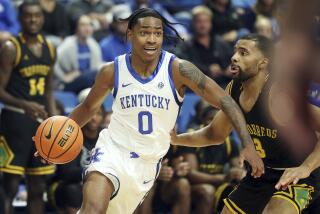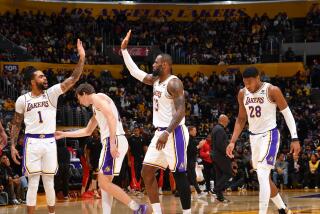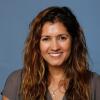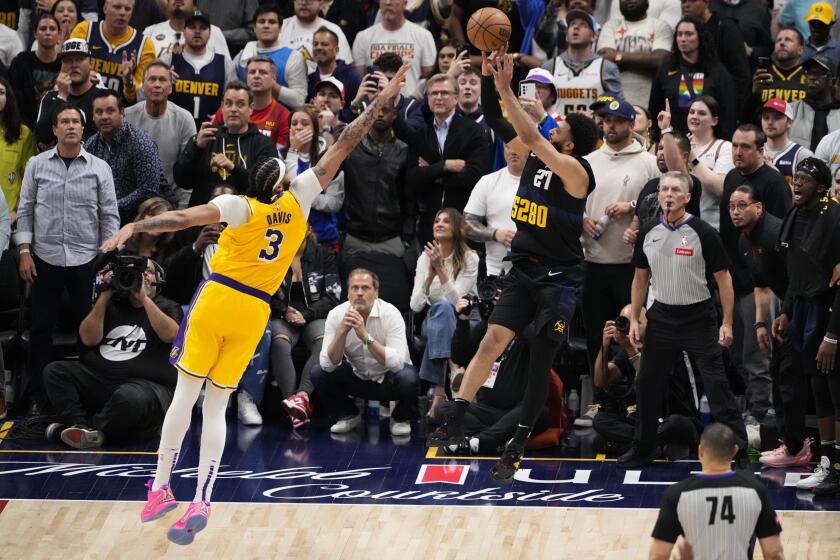Lakers could look to improve their shooting in draft
Kyle Kuzma watched last year’s NBA draft at a modest house party in Michigan. With the eyes of Los Angeles diverted elsewhere, he learned he’d be a Laker in a crowded living room filled with family and friends.
While everyone focused on Lonzo Ball, and the Lakers’ front office heralded the former UCLA star as the face of the franchise, Kuzma took notice.
In the months that followed, the 27th pick in the draft became the Lakers’ hottest rookie and one of their best scorers. With his play, Kuzma showed that projecting how a college player might translate to the NBA is an inexact science. The Lakers are scheduled to select 25th in this year’s draft, hoping to strike late first-round gold again.
Where last year the draft was the focal point of the Lakers’ summer, this year free agency carries much more weight. They worked out 125 players, more than they did last year, and have spent the last several weeks scouring film and ranking prospects.
With the 25th, 39th and 47th picks, they hope to improve their shooting. That is a draft-day goal that is often more difficult than it seems. But it can be an important one.
“It’s hard for teams to find shooting, either in free agency [where] it will likely cost you, or in the trade market where you have to give up something,” ESPN insider Bobby Marks said. “And to find value in the draft, if it’s in the 20s, on a player that’s going to make $2 million [a year] for the next four years and you’ve got him on a controllable contract. I think that outweighs a team that wants to go out and spend $5 or $6 million on a veteran shooter.”
The Lakers, who on Wednesday acquired the 39th pick in the draft in a trade that sent their 2019 second-round pick and cash to the Philadelphia 76ers, desperately need to improve their shooting.
They ranked 29th among the NBA’s 30 teams in three-point shooting last season. In a league trending toward a dependence on three-point shooting, Lakers coach Luke Walton often discouraged his players from firing away from long range because of their futility.
Many consider this year’s draft to be deep enough that good players will still be available late in the first round, but the emphasis on shooting throughout the NBA means that other teams might covet the same players that the Lakers do.
Maryland’s Kevin Huer-ter could be available to the Lakers, and the Lakers have shown interest. Huerter made 50.3% of his shots last season and 41.7% of his three-pointers. Duke’s Grayson Allen and Gary Trent Jr. are also players who might be able help a team’s shooting.
College numbers don’t always predict NBA success.
Former Laker D’Angelo Russell, the second pick in the 2015 draft, made 41% of his three-point shots at Ohio State, making him the second-best three-point shooter in the Big Ten. In the NBA, Russell has made 40.9% of his overall shots, 34.4% from beyond the arc. Ty Lawson had the Atlantic Coast Conference’s best true shooting percentage in his sophomore and junior seasons at North Carolina. In the NBA, his effective field goal percentage is 10 points lower.
Sometimes a player who wasn’t known for his shooting in college can develop into a good shooter.
Kawhi Leonard made only 25% of his three-point shots at San Diego State but has made nearly 39% in the NBA. Karl-Anthony Towns attempted only eight three-point shots during his one season at Kentucky, making two. In three seasons with the Minnesota Timberwolves, he has made 39% of 648 three-point shots.
“I think the NBA has proven over the years you can take a guy who may not project as a great shooter in college and make him a much better shooter,” ESPN college basketball analyst Jay Bilas said. “I still don’t think you can make a bad shooter into a great shooter, but you can make an average shooter into a good one, just with the amount of time they put into it, the reps, change in mechanics, things like that.”
Kuzma fits the latter category.
He quickly became the Lakers’ most willing and confident shooter. While his rookie season was far from perfect, he finished as one of the team’s leading scorers, tied with Brandon Ingram and Julius Randle at 16.1 points a game. He made 30% of his three-pointers in college and 36.6% in the NBA.
His play earned him first-team all-rookie honors.
He’s all the proof anyone needs that drafting late doesn’t preclude landing a potential star.
Follow Tania Ganguli on Twitter @taniaganguli
More to Read
All things Lakers, all the time.
Get all the Lakers news you need in Dan Woike's weekly newsletter.
You may occasionally receive promotional content from the Los Angeles Times.







